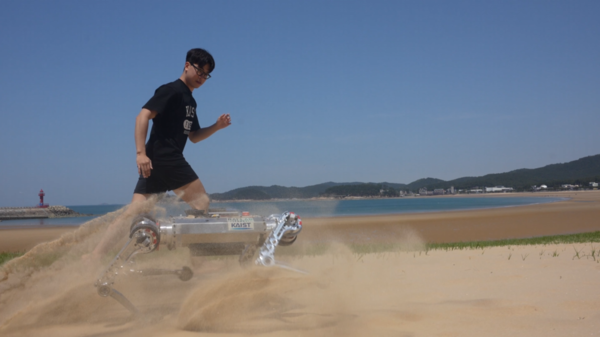
Quadrupedal robot control technology keeps improving
Korea Advanced Institute of Science and Technology (KAIST) announced on Jan. 25 that its research team had developed a robotic dog walking through a sandy beach.The team, headed by Prof. Hwangbo Jemin, noted that the new quadrupedal robot was designed to maneuver robustly with agility even in deformable terrain.“We have developed a technology to model the force received by a walking robot on the ground made of granular materials such as sand and simulate it via a quadrupedal robot,” Prof. Hwangbo said.“Also, we have worked on an artificial neural network structure which is suitable in making real-time decisions needed in adapting to various types of ground without prior information while walking at the same time and applied it to reinforcement learning.”He expected that the trained neural network controller would expand the scope of application of quadrupedal walking robots by proving its robustness in changing terrain, such as the ability to move at high speed even on a sandy beach and walk and turn on soft grounds like an air mattress without losing balance.Ph.D. student Choi Soo-young of KAIST also took part in the research.The team came up with a paper on the related technology in the January edition of the peer-reviewed journal Science Robotics. The first author was Choi.KAIST said that the research team had defined a contact model to predict the force generated upon contact from the motion dynamics of a walking body.In addition, the team calculated the force generated from one or several contacts at each time step, simulating the deforming terrain at the same time.이 기사를 공유합니다
Tim Kim
(voc200@gmail.com)

